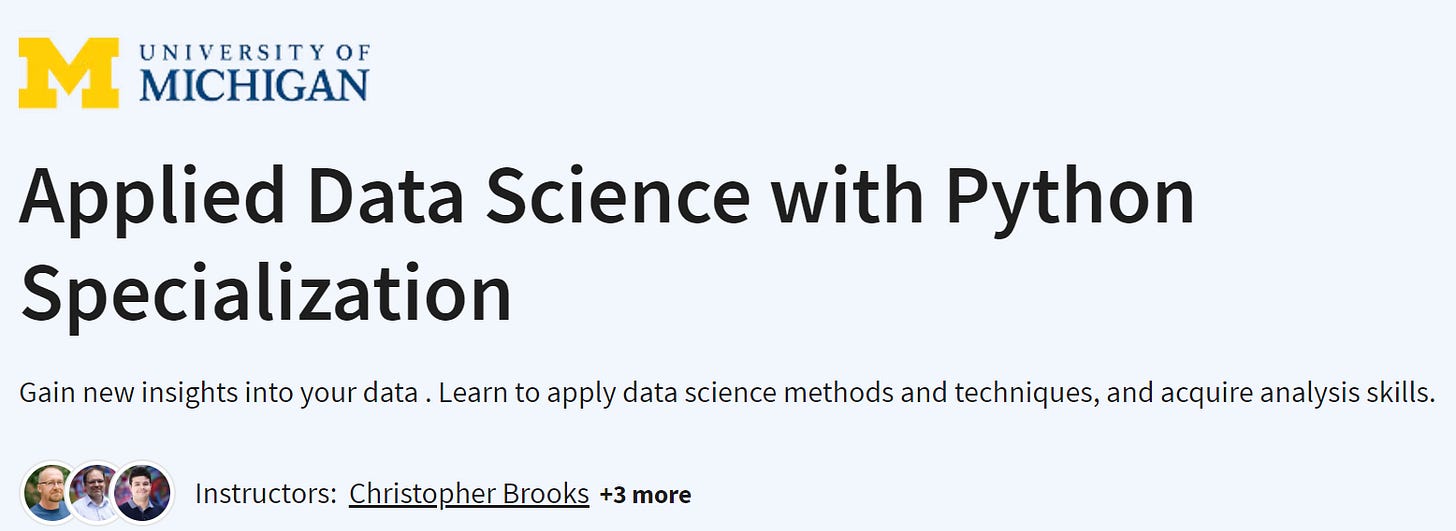Today, I want to share how I fell into Network Science, as it was not expected, but it was one of the most important accidental opportunities of my life. I fell into this.
I’ll start with a timeline, so that you have this in mind, and so that this doesn’t become a post of me rambling.
1999-Now: Tons and tons of Entity-Relationship Diagrams (Database Diagrams)
2016: Led my team’s GDPR initiative; software inputs and outputs. Coworker inspired me to look into Data Science and use Coursera; Mentioned another better way of “mapping out” things.
2016-2017: Took Coursera 5 Course Data Science specialization. Took my time, bought books, learned it well. Final course was Social Network Analysis.
2017-Now: Got hooked on the idea of networks and how pervasive they are. Read “Linked” and had my mind blown. Started buying and reading every Network book I could find and afford. Became an obsession. Couldn’t stop thinking about it or talking about it.
2018: Read Dmitry Zinoviev’s book Complex Analysis with Python. Connected the remaining dots in my mind. Thank you very, very much.
2018-2020: Created lots of “data flow” networks. Mapped out data flow across data centers. Huge improvement to data operations, especially useful in data migrations and uplifts. Data operations people, this is very useful.
2020: Used for malware analysis. Malware evolves, too, and can be analyzed using these tools!
2020: Did the original #100daysofnetworks. Went in with low confidence and very simple skills. Could only do whole network analysis in the beginning, and gradually went deep.
2021: Wrote a book, and started a company. Did so much network analysis for both, and continue to use Network Science daily in my work. It is more useful to me than other aspects of Data Science such as Machine Learning.
2021-Now: Continue to learn, experiment, build, and improve. This is never-ending. There is always more to learn. Network Science has a rich ecosystem, like Data Science does.
Looking Closer
Let’s dig into a few of these, but still keep this post short enough.
First, I have been working with databases since I was sixteen years old, and learned about Entity-Relationship diagrams in my early twenties, about 23 years ago. Really fell in love with ER diagrams and database design. Found ER diagrams to be fascinating. Guess what, they are networks!
An Entity Relationship diagram is a visualization that shows how database tables relate to other database tables. If one table has a foreign key for another table, they are related. ER diagrams are network visualizations, even if people don’t realize it.
Knowing about ER diagrams, I began to think about code as having inputs and outputs. Data goes in, code does something, data goes out. In that way, code follows a chain, and if you map out an entire server or suite of related software, it forms a complex network.
Realizing that malware is code, I wondered if it also follows a network. IT DOES. There are several ways to use network analysis to analyze malware, in my experience.
No matter where I looked, I kept finding more and more networks! They’re everywhere. I could see them in my data, but I didn’t know how to effectively use the network data, or analyze it!
Help People! Inspire Others!
If it were not for my coworker giving a talk at a data club on his path into Data Science, I probably wouldn’t have gotten interested in Data Science. It felt unapproachable before his talk. I am forever grateful, and remind him often that I remember this.
If it were not for the University of Michigan and Coursera, I wouldn’t have found Data Science useful in my work. This is the specialization that helped me. I spent three times longer than expected, bought many books for supplemental learning, and really dug in. This was incredibly helpful.
If it were not for the book Linked, I wouldn’t have become obsessed with Networks.
If it were not for Dmitry Zinoviev writing a book, I wouldn’t have learned to apply Network Science and Social Network Analysis to my work. He had a huge impact in my career. You should check out his book!
If it were not for #100daysofnetworks, I wouldn’t have realized how deep this rabbit hole actually goes, how useful these techniques are, and how this would have changed the way that I even think about things.
And there are many other books that helped and inspired me, along the way. I will mention them, throughout #100daysofnetworks.
The moral to the story is this: do your thing, learn what interests you, and tell people what you learn. You never know how you will inspire others, and you may ignite the spark of an idea that has a huge positive impact in someone’s life.
Thank You!
Thank you, everyone who has followed along with my adventures into Data Science and Network Science. I love hearing from my readers, how these techniques are proving useful to them and showing them things they didn’t expect to see.
Thank you for making this fun for me, so that I am energized to learn and share.
And thank you to everyone who has participated in the first book giveaway! I’ve received some nice submissions and will be announcing the winners tomorrow! There will be more giveaways, so stay tuned!
If you would like to learn more about networks and network analysis, please buy a copy of my book!






